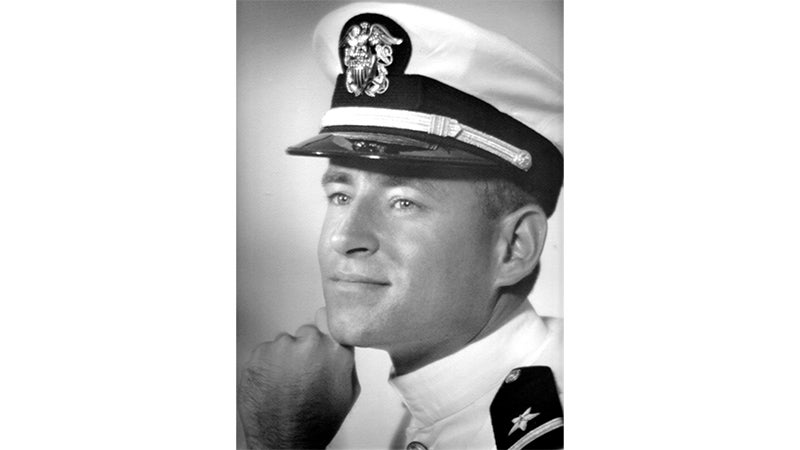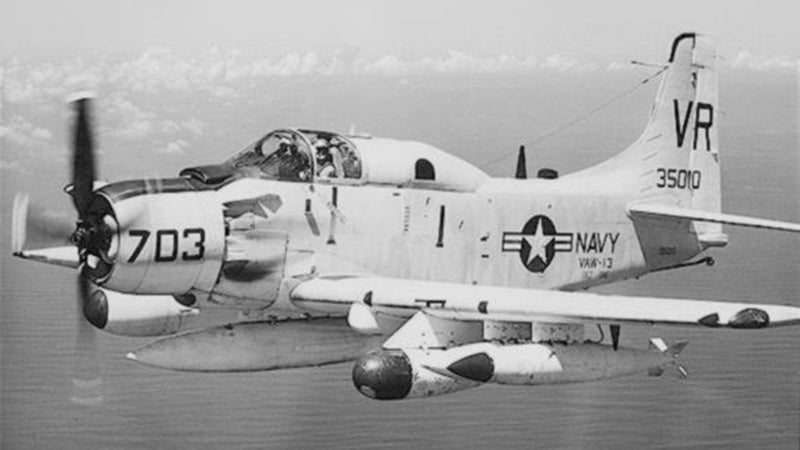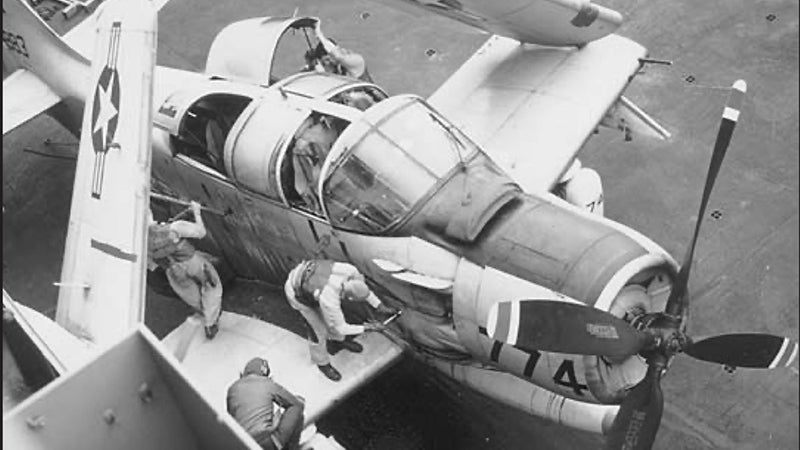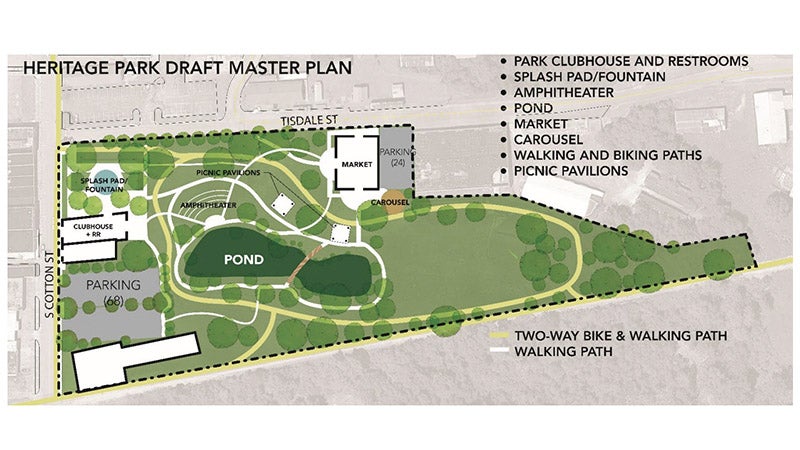Robert D. Carlton, Lieutenant, U.S. Navy, Naval Flight Officer, Vietnam Flying in the Fat Spad – Part 1
Published 1:00 pm Friday, March 3, 2023

- Commissioning photo of Ensign Bob Carlton.[Photo: Bob Carlton]
|
Getting your Trinity Audio player ready...
|
Author’s note: The Navy AD aircraft [nicknamed “The Spad”] was a Korean War era, single-seat, attack aircraft, that was widely used in Vietnam. Douglas Aircraft also made a wide-body version that was used as an Electronics Countermeasure [ECM] aircraft whose mission was to support strike aircraft. It could seat a pilot and Navy Flight Officer up front, along with two electronics technicians in back. The wide-bodied plane was designated the EA-1F and became known as the “Fat Spad.”

Earlier photo of the EA-1F “Fat Spad” that crashed when launched from the USS Hancock on June 20, 1966. Note the enclosed back canopy where Lt. Bob Carlton was located on the night of the crash. Aircraft is Bureau # 135010. [Photo: Bob Carlton]
The plane needed to launch immediately to provide support for an attack mission against a group of 100 or more N. Vietnamese trucks that had been spotted on the Ho Chi Minh trail.
Bob recalled, “I told him I would fly the mission and climbed into the back seat. Normally there would be two men in the back but the equipment in the other seat was down. A few minutes later, I heard the pilot and the front-seat flight officer come on board and slam the canopy shut. You can’t see anything from the back seat but the panel in front. I felt us taxi over to the catapult and prepared for launch…As we launched, I felt us accelerate but something seemed wrong… I could tell that our tail wheel was still rolling when it should have been airborne…I felt the aircraft make a sudden lunge to starboard and a tremendous impact when we hit the water.”
It was later learned that the wire bridle that attached the catapult shuttle to the left main mount of the aircraft had ruptured on launch.
Bob continued, “All the lights went out and water quickly rose above my head. I flipped the emergency canopy handle, pushed the canopy away and exited the aircraft. I knew I was somewhere under the ship because I could hear the ship’s screws turning…It seemed like I swam for three or four minutes before I suddenly popped to the surface… I could see the stars and quickly found my flashlight…As I shined the light around, it reflected off the helmet of the other flight officer, LTJG Jay LaGreggs…He asked me if I had my pistol and I answered yes and fired off several tracer rounds.
“A nearby destroyer was searching for us and his searchlight suddenly went out. I heard a loud voice over the ship’s speaker, ‘Don’t shoot and we’ll come pick you up.’ Before they could make it, a Navy rescue helicopter picked us up…We spent 30 minutes searching for our pilot, Lt. John McDonnough, but we only found his helmet and Mae West life jacket. That was just his second flight after reporting aboard the Hancock.

Overhead view of the EA-1F “Fat Spad” showing the open cockpit front and back. Note that Navy aircraft have wings that can fold [as seen here] so that they take up less space, allowing the carrier to embark more aircraft. [Photo: LTJG John Marlin, USN]
Robert Dumas Carlton was born June 10, 1942, in Andalusia, Alabama. His parents were Raymond M. and Celeste Avant Carlton. Bob had an older brother, Raymond M. [Buck] Carlton, Jr. Bob attended Andalusia city schools and graduated from Andalusia High School in 1960. He enrolled at Troy State College [now Troy University] and earned a BS in Mathematics and Physical Science in 1964. Bob worked at Blue Lake Methodist Camp for four summers while at Troy.
In June 1964, Bob was accepted into OCS at Naval Air Station, Pensacola, Florida, as part of pre-flight training. After training as a Naval Flight Officer [NFO] at Pensacola, Bob was sent to Glynco Naval Air Station, Georgia for advanced training and received his NFO Wings in June 1965. He was then assigned to VAW-13 [Airborne Early Warning Squadron -13] at Alameda Naval Air Station, California. After further training at Alameda, Bob was deployed to the USS Hancock, operating in the South China Sea, in May 1966.
VAW-13 provided two-plane detachments aboard all Navy carriers operating in the waters of the Vietnam theater. As a new carrier arrived on station, two EA-1Fs from VAW-13 would leave the departing carrier and join the new carrier. During two, seven-month deployments, Bob Carlton flew 162 combat missions from eight different aircraft carriers: USS Constellation [CVA-64], USS Franklin D. Roosevelt [CVA-42], USS Enterprise [CVN-65], USS Intrepid [CVA-11], USS Hancock [CVA-19], USS Bon Homme Richard [CVA-31], USS Oriskany [CVA-34] and USS Coral Sea [CVA-43].
The EA-1F aircraft flown by VAW-13 did not have the updated electronics and jamming equipment used by Wild Weasel aircraft flown by the Air Force. Bob recalled, “Our jammers had fixed antenna so the pilot had to keep the nose pointed toward the target. We would initiate a jamming run by making a slant-range approach at 10,000 feet until we got to within 10 miles of the target. Then we would go back out and repeat the same maneuver. Most runs were made at about 100 knots so that we could stay on target as long as possible.
“We had pretty good navigational radar with a range of about 100 miles. We had to be alert because the N. Vietnamese liked to “spoof” TACAN.” TACAN is a system of stations that transmit ultra-high frequency signals back to an aircraft showing bearing and range from the aircraft to the station. [End Part 1]
John Vick





